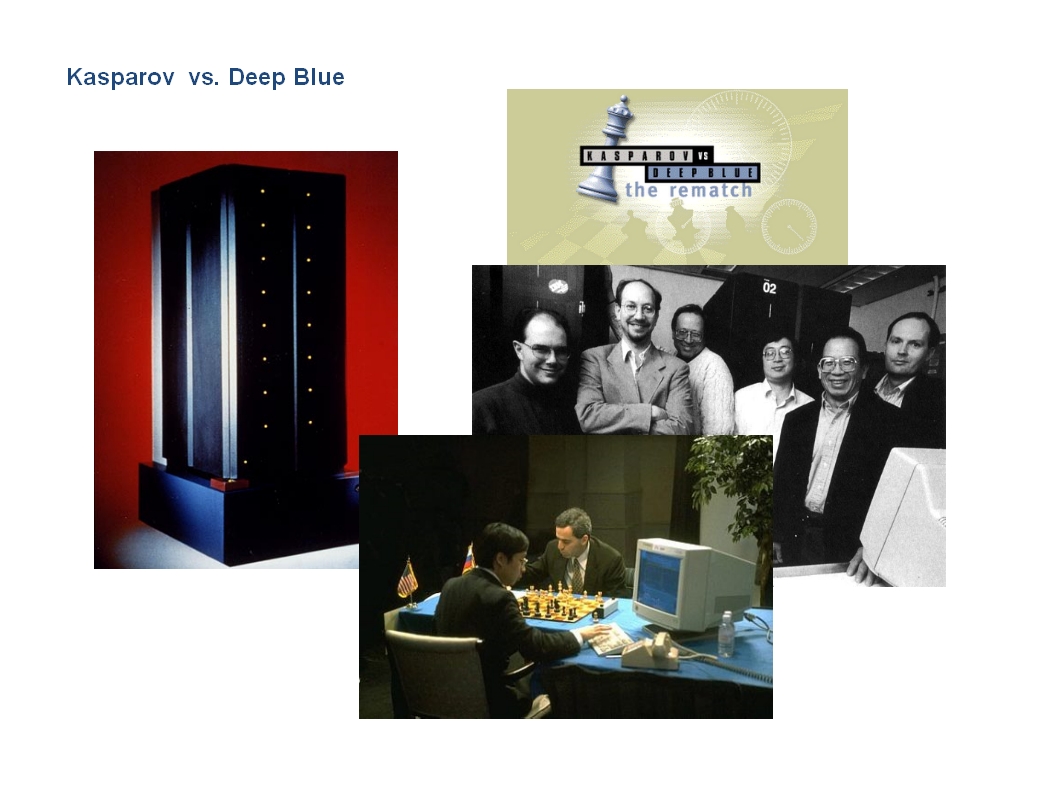What we also learn is that Deep Blue benefited from the guidance of five IBM research scientists and one international grandmaster—the team Kasparov was effectivey playing against. Any changes in the way Deepblue played was performed by the members of the development team between games.
It is noteworthy in this respect that chess is essentially a finite game or a "world model": 64 squares and 2 x 16 pieces of six types, each of which can only move in certain ways. A number-crunching mechanism or a cluster of them can therefore, in principle, complete all possible ways of playing the game. However, given the parameters of the game, the numbers to crunch quickly become so astronomical that much faster and more powerful processing would be needed than currently is available. Also, the variety in the game of chess is of such enormity that even the best computers to-date do not take away or replace the "game": strategic planning, experience, tactic, intuition, character, style, emotionality, and so on. However, there was a turning point in the development of chess programmes already in the 1970s. If computers were made to do what they are best at—search through as many possibilities as they can as quickly as they can—and the pretence of trying to emulate how humans play is abandoned, their performance improved significantly. What we can infer then is that something entirely different is going on in the way humans reason compared to a machine's ability to process data.
